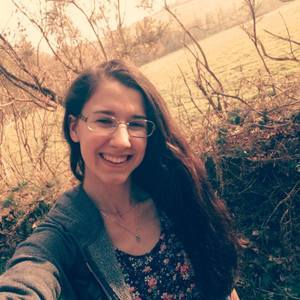1595488
Physical Education-Socio-Cultural Studies (CONT) AS LEVEL OCR
Descrição
Sem etiquetas
FlashCards por Hannah Goodenough, atualizado more than 1 year ago
Mais
Menos

|
Criado por Hannah Goodenough
aproximadamente 10 anos atrás
|
|
Resumo de Recurso
| Questão | Responda |
| What is physical activity? | Anything that causes the body to move, raise your pulse rate or increase your breathing rate. |
| What is play? | Fun, make believe activities that are unstructured. Eg. pretending to drive a car. |
| What is Physical recreation? | An unplanned activity that requires a skill. Eg. Cartwheels. |
| What is Outdoor recreation? | An unplanned activity that requires a skill but is done in the great outdoors. Eg. Skiing or mountain climbing. |
| What is Physical education? | An activity that is done in an education institution and follows a national curriculum. It is structured. Eg. Learning how to serve in tennis at school. |
| What is Outdoor education? | An activity that is done in the great outdoors but follows a national curriculum and is done in a learning environment. Eg. Learning how to ab sail down a cliff. |
| What is Sport? | Sport is an activity that is competitive, structured, coached, requires kit, governed by national bodies and requires a higher level of skill. Eg. Rugby and Netball. |
| What is exercise? | An activity requiring physical effort |
| What is a healthy balanced lifestyle? | Having a nutritious diet, sufficient rest, good levels of personal hygiene and having medical needs met. Plus doing one or more hobbies or interests as well as a physical exercise with minimum stress. |
| What is lifelong physical activity? | Participating in an activity that you enjoy and can do for the rest of your life to keep fit. They can either be competitive or non competitive. Eg. Netball or walking the dog. |
| What are lifetime sports? | A sport you can enjoy for the rest of your life. Eg. golf, tennis, running and cycling. |
| Name 3 physical benefits of participating in regular physical activity. | ->Strengthens bones and muscles. ->Reduces risk of cardiovascular disease. ->Reduces risk of some cancers. ->Increases chance of living longer. ->Reduces risk of type 2 diabetes. |
| Name 3 mental benefits of participating in regular physical activity. | ->Improves your mental health. ->Improves your mood. ->Can help you sleep. ->Reduces stress. ->Helps keep thinking, learning and judgmental skills as you age. |
| Name 3 social benefits of participating in regular physical activity. | ->Teamwork skills increase. ->Meet up for physical activities. ->Meet new people. |
| Name 3 personal benefits of participating in regular physical activity. | ->Controls your weight. ->Improves your ability to do daily activities ->Prevents falls when your older. ->Makes you stronger. |
| What is the National Healthy Schools Programme (NHSP) | A programme that started in 1999 and is a project for schools and families, intending to improve health, raise pupil achievement and improve social inclusion. |
| What themes are there under the National Healthy Schools Programme? (There is 4) | ->Sex and relationships and Drugs education. ->Healthy eating. ->Physical activity. ->Emotional health and well-being. |
| What does sedentary mean? | Having an inactive lifestyle. |
| Name 5 reasons for having a sedentary lifestyle. | ->Invention of gadgets and industrilation. ->No free time due to work. ->Not enough money. ->Updated transport. Eg. cars and trains. ->Role models. Parents not exercising. |
| Name 5 barriers that are in place for participating in physical activity. | ->Socio-economic barriers (not enough money) ->Location ->Peers, families and friends. ->Danger ->Young peoples perception (they arent good enough) |
| Name 5 key aspects of the Countryside Code. | ->Be safe-plan ahead and follow any signs. ->Leave gates and property as you find them. ->Protect animals and plants. Keep litter. -> Keep dogs under control. ->Consider other people. |
| What is recreation? | Implies enjoyment. Its key motive is generally stress relief and requires little or no equipment, no facilities and no planning. |
| Why do people do outdoor recreation? | Many people appreciate the natural environment and therefore respect it. They may also gain a sense of adventure and perhaps risk. |
| Key features of both physical and outdoor recreation. | ->Challenging but non competitive. ->No definite outcome. ->No extrinsic rewards. ->No governing body. ->Self satisfaction . ->Limited organisation. ->Limited outcome. |
| Who does physical recreation? | EVERYONE! Eg. School children outside at break time doing cartwheels. Or an elderly person taking their dog for a walk. |
| When do people do physical recreation? | ANYTIME! Eg. During school breaks. After school in the park. Morning swim. |
| Where do people do physical recreation? | ANYWHERE! Eg. Parks, fields, recreational ground, sports center (playing badminton with no rules) |
| Why do people do physical recreation? | FOR FUN!!! (enjoyment and stress relief) |
| How do people do physical recreation? | By using imagination and creativity. ->recreating any type of activity. ->need no kit. ->no planning. ->no rules. ->no official. |
Quer criar seus próprios Flashcards gratuitos com GoConqr? Saiba mais.
